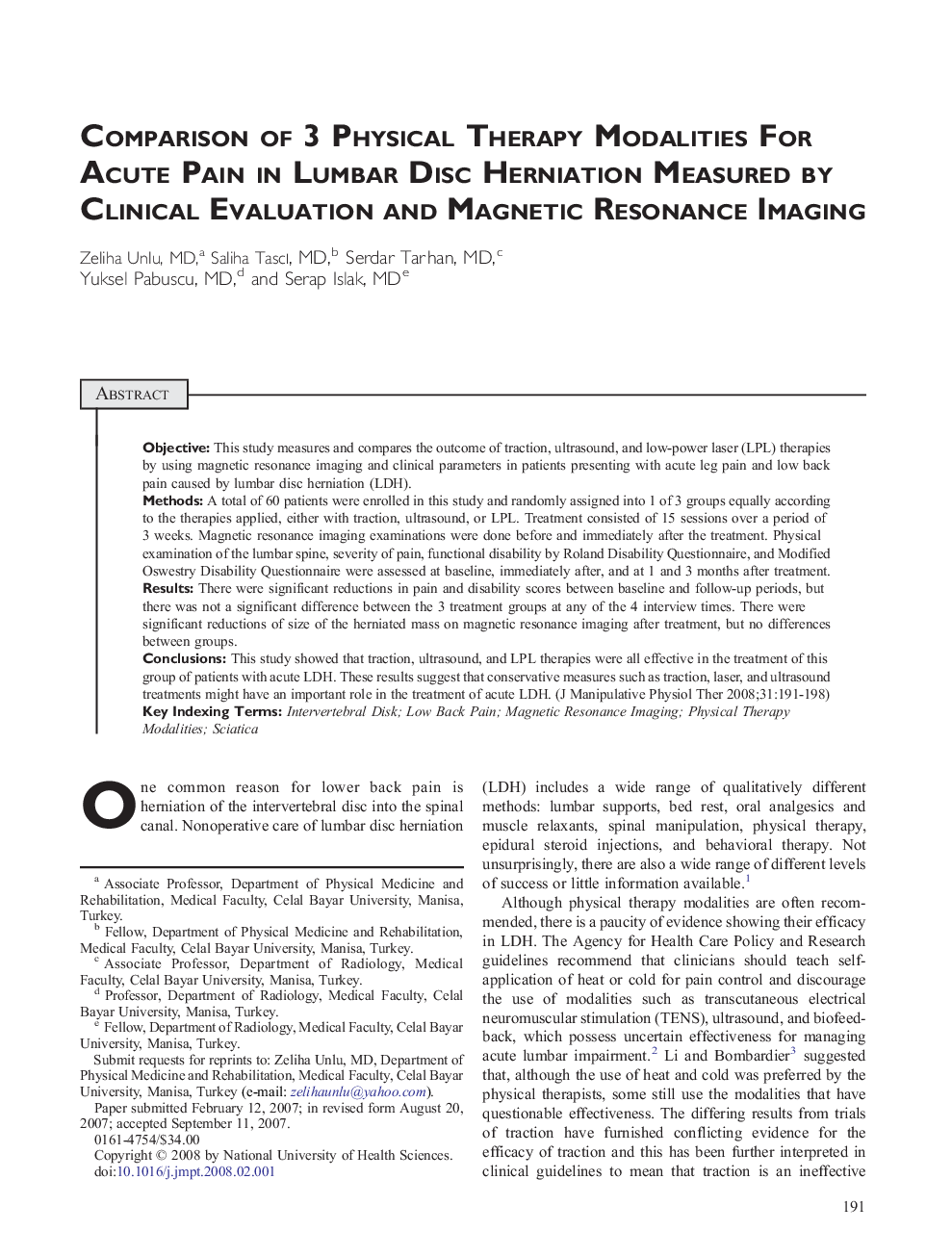| Article ID | Journal | Published Year | Pages | File Type |
|---|---|---|---|---|
| 2621712 | Journal of Manipulative and Physiological Therapeutics | 2008 | 8 Pages |
ObjectiveThis study measures and compares the outcome of traction, ultrasound, and low-power laser (LPL) therapies by using magnetic resonance imaging and clinical parameters in patients presenting with acute leg pain and low back pain caused by lumbar disc herniation (LDH).MethodsA total of 60 patients were enrolled in this study and randomly assigned into 1 of 3 groups equally according to the therapies applied, either with traction, ultrasound, or LPL. Treatment consisted of 15 sessions over a period of 3 weeks. Magnetic resonance imaging examinations were done before and immediately after the treatment. Physical examination of the lumbar spine, severity of pain, functional disability by Roland Disability Questionnaire, and Modified Oswestry Disability Questionnaire were assessed at baseline, immediately after, and at 1 and 3 months after treatment.ResultsThere were significant reductions in pain and disability scores between baseline and follow-up periods, but there was not a significant difference between the 3 treatment groups at any of the 4 interview times. There were significant reductions of size of the herniated mass on magnetic resonance imaging after treatment, but no differences between groups.ConclusionsThis study showed that traction, ultrasound, and LPL therapies were all effective in the treatment of this group of patients with acute LDH. These results suggest that conservative measures such as traction, laser, and ultrasound treatments might have an important role in the treatment of acute LDH.
